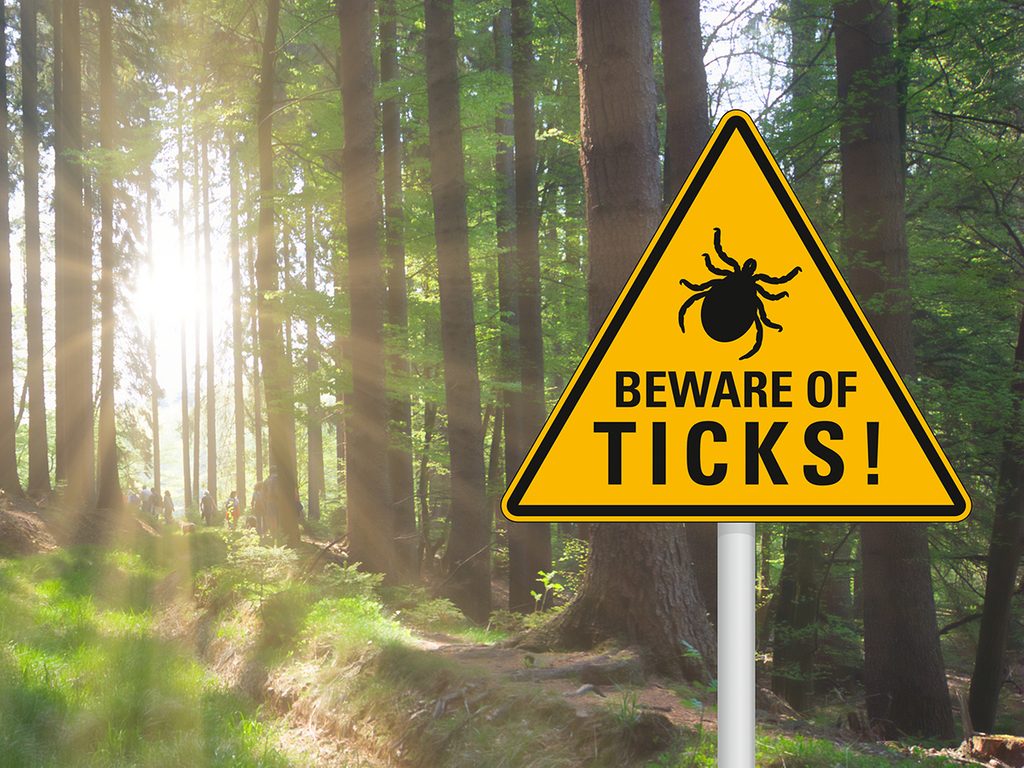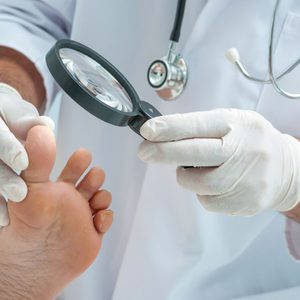The Scary Truth About the Treatment of Lyme Disease and Tick-Borne Illnesses

Lyme Disease and other tick-borne illnesses are on the rise in Europe, yet authorities across the continent are woefully behind in addressing this serious health problem.
One day seven years ago, Gitte Larsen woke up with a headache. It wouldn’t go away, not after a week, or a month, or a year or two or five. The headache became the percussive accompaniment to her agonizing journey through Denmark’s healthcare system and beyond.
At the time, she’d just turned 40, a tall, rangy woman in the prime of life, a “futurist” whose work was predicting health trends. She lived with her husband, two daughters, and her beloved Jack Russell terrier in a house in the forested countryside north of Copenhagen. At various times doctors diagnosed her with a host of conditions, from fibromyalgia to hypothyroidism. As time went on, Gitte, now 47, became too weak to work.
She and her husband moved the family to an apartment in Copenhagen to be closer to medical services. The couple exhausted their savings in the search for answers and a cure. Then in 2015, as Gitte recounted her symptoms at a meeting for people who have metabolic issues, someone said it sounded like she had a variant of Lyme disease.
Could it be? She knew Lyme disease was spread by ticks, tiny parasites that could jump from deer to pets or humans. But after walking her dog in the country, she’d always checked him, methodically running her fingers through his coat because ticks were so easy to miss, tiny, flat and dark until they gorged on their victim’s blood. And she couldn’t remember ever getting the rash, the erythema migrans, which looks like a bull’s eye. According to medical authorities, it is the telltale sign of a tick bite containing the borrelia bacteria.
Her Danish doctors insisted she didn’t have the condition. Desperate, in January 2016 she traveled to Augsburg, Germany, where Dr. Armin Schwarzbach tested her at his clinic, which specializes in detecting tick-borne diseases. The test proved positive for a number of Lyme infections, including arthritis and neuroborreliosis, and Lyme-induced psychoses that included psychiatric conditions such as depression, and other physical conditions such as headache and debilitating fatigue. Finally, Gitte knew what ailed her.
Ticks have been around for millions of years—members of the arachnid family that stealthily latch onto their victims, anesthetizing the skin so that their visit goes undetected. The names of the different tick species sound like nightmarish Harry Potter characters— ixodes ricinus, dermacentor reticulatus, and hyalomma marginatum among them.
Ticks have been around for millions of years— members of the arachnid family that stealthily latch onto their victims, anesthetizing the skin so that their visit goes undetected.
But the nearly 30-odd pathogens they carry are very real and dangerous, from tick-borne encephalitis to tularemia, a highly infectious condition that attacks the skin, eyes, mouth, lymph nodes, and lungs. In Europe, the most common condition is Lyme borreliosis, named for the U.S. town in Connecticut where clusters of it were diagnosed in 1975, as was the type of bacteria that carries it. The U.S.-based Centers for Disease Control and Prevention estimates that there are 329,000 new cases of Lyme disease each year. It acknowledges that this estimate is likely low, given that not all cases are reported. Across the Atlantic, the European Centre for Dis-ease Prevention and Control (ECDC) estimates there have been 360,000 cases in the last two decades. Why such a difference? Perhaps because the ECDC does not track cases per se, or have a central registry. Instead, its spokesperson Anca Paduraru, says it is the responsibility of each member country to compile statistics—or not. (Here’s what you need to know about Lyme disease in Canada.)
In Spain, for example, Lyme disease is not considered an “Obligatory Statement Disease” so there are only estimates: 0.25 cases per 100,000 inhabitants each year. And Germany does not record the incidence of the condition on a national basis, period; instead, certain regions, such as Bavaria, have opted to track cases on their own. That said, in 2015 the ECDC did help member countries raise awareness about tick-borne diseases through measures such as leaflets distributed to doctors’ waiting rooms, pharmacies, and community centers.
This year the organization is to release a report on the readiness of countries to deal with tick-borne diseases. For specialists such as Dr.Schwarbach, the lack of hard data should be a clarion call to action. He likens ticks to dirty needles because no matter how small they are, they are full of bacteria and viruses that can make you very sick, for a very long time. “The last years there have been more ticks in general because temperatures in Europe have been higher year-round,” he says. “This means the ground does not freeze, even if it may be covered in snow and ice.”
Only a few years ago, ticks could not survive in the Alps at more than 700 metres above sea level. Now they thrive at altitudes as high as 1,500 meters, says Jean-François Cosson, an expert in veterinary medicine and evolutionary ecology at the National Institute for Agricultural Research (INRA) in France. “Warmer temperatures have meant vegetation growing higher on the mountains and an increase in the deer population, which ticks use for transportation,” he continues.
In response to the increasing threat, Cosson notes that INRA has teamed with the French health ministry to launch a free, interactive smartphone app, Signalement TIQUE (Tick Alert) to track the little parasites as well as provide advice should someone be bitten. In Scandinavia, climate change means that ticks have migrated as far north as the Arctic Lapland, where there have been some cases of tick-borne encephalitis. And in La Rioja, the fabled mountainous wine region in northern Spain, along with Lyme disease, specialists are grappling with a rash of spotted fever cases caused by tick-borne bacteria called rickettsia, including a kind caused by rickettsia monacensis that has evolved as a human pathogen for the first time.
Dr. Jose Antonio Oteo, who heads the department of infectious diseases at La Rioja’s Center for Biomedical Research, says the official response is never enough. “Research to develop sensitive and specific microbiological tests should be supported. And we could control the numbers of large animals that carry ticks and exacerbate the problem.”
When it comes to Lyme disease, a big part of the problem seems to be the difficulty of diagnosis. Right now, the go-to test around the world is the Enzyme-Linked Immunosorbent Serum Assay, which looks for antibodies linked to the condition. But studies have shown the test is far from accurate, with labs incorrectly or inconsistently replicating results for Lyme antibodies more than 50 percent of the time.
Like its hardy bacterial brethren since time immemorial, Lyme borrelia are survivors, changing, hiding, and adapting to their hosts’ physical weaknesses. That’s why they may be found burrowed into a joint, or in the heart or liver. And that’s where the more controversial Enzyme Linked ImmunoSpot test comes in: those specialists who use it claim it is so sensitive, it can detect even one Lyme reactive T-cell (so-called because they develop in thymus gland) in a sample. But it gets even more complicated. With Lyme, many experts maintain that if a patient doesn’t have accepted symptoms such as the bull’s eye rash, then it isn’t Lyme disease at all, which means there is no merit to prescribing antibiotics.
For years, the American approach to Lyme Disease mirrored that of most countries in Europe: if you didn’t have the telltale bull’s eye rash, you had not contracted the condition, and it was a relatively rare occurrence limited to several states in the northeast. Times have changed. Although there is still debate over the existence of chronic Lyme Disease, at least now the CDC recommends that doctors who suspect Lyme is the cause for their patients’ symptoms prescribe antibiotics even if tests prove negative.
For the same reason, some states have stepped in; in 2013, for example, Virginia passed the Lyme Disease Testing Information Disclosure Act, which requires doctors to inform patients that a negative test does not necessarily mean they are Lyme-free. Maryland followed suit in 2016. In Europe, countries base their treatment protocols on outdated Infectious Diseases Society of America guidelines which state that no more than a month’s worth of antibiotics is all it takes to cure the condition. But in 2016 the National Guideline Clearinghouse, run by the U.S. Department of Health and Human Services, removed them from its database of evidence-based clinical practice guidelines, replacing them with those of the International Lyme and Associated Diseases Society (ILADS). Developed in 2014, the ILADS guidelines take into account the possibility that patients may not get better right away, and recommend longer courses of treatment and, for potentially chronic cases, repeated rounds of antibiotics.
This has led to the suspension of specialists such as Dr. Kenneth Sandström, a Swedish physician who has been treating Lyme patients for over five years and last year was forced by the country’s college of physicians to stop practising because he was not adhering to the prescribed guidelines.
For Gitte Larsen, the suspension completely misses the point—that after years of suffering and misdiagnoses, patients are being helped by unconventional practice. She refuses to name the lone doctor in Denmark doing the same thing for fear the authorities would suspend him, too. “I know that with Lyme borreliosis, not everyone gets the bull’s eye rash, and that medical authorities in Denmark and in much of the rest of Europe are behind the times. “I also know that I am very mad and I don’t want this to happen to anyone else, if I can help it.” What to do?
Dr. Christian Perrone, head of the infectious diseases department at Raymond and Poincare University Hospital in Garches, a community just west of Paris, says things are starting to change but not quickly enough. The author of The Truth About Lyme Disease, he says he has seen patients who were given two to three weeks’ worth of antibiotics and then told to go away because they were cured. But they weren’t. Some have sought treatment in other countries. Others choose to commit suicide.
“Most medical authorities are still skeptical of the existence of chronic Lyme disease. They think that if you come back with complaints, there must be something wrong in your head. It’s a health scandal,” he says. Dr. Perronne has devoted much of his professional life to making colleagues in Europe and beyond realize that chronic Lyme disease, in all its physiological and neurological iterations, exists and needs to be urgently addressed. “We need to be creating dedicated hospital wards for Lyme patients and to be incorporating the latest scientific research in our practice.”
Dr. Schwarzbach of Germany echoes Dr. Perrone when he says he is fighting for the patients. “We need to bring doctors and patients together, to hold conferences, to include veterinarians and other interest groups. Together, we will be stronger.” Long-time patients are heeding the call.
“Research to develop sensitive and specific microbiological tests should be supported. And we could control the numbers of large animals that carry ticks and exacerbate the problem.” – Dr. Jose Antonio Oteo
Matthias Lacoste, a former financial analyst, started the activist group The Right to Heal, after being diagnosed with Lyme disease in December 2015—13 years after he began to suffer symptoms that were misdiagnosed at various points as multiple sclerosis, rheumatoid arthritis, and cancer. The married father of two, who lives in the village of Vesseaux in the Ardéche region of southern France, was put on corticosteroids and underwent chemotherapy, all to no avail. The group currently has about 700 members across the country and is growing every day.
“We’re completely steeped in the cause. We’re becoming an international movement,” says Lacoste. At protests the dark-haired 35-year-old with great bags under his eyes makes known his displeasure with authorities who are more concerned with prevention than proper screening for the disease and treatment. He expresses his unhappiness that his health insurer refuses to cover his costs. “Our claim is simple,” he says. “We claim the right to be cured.” He wants to experience several days, or weeks, in a row when he can pick up his children, or run outside to toss a ball, or sleep through the night. “It’s not too much to ask, is it?”
Back in Copenhagen, Gitte Larsen, who now uses cannabis oils and various foods to treat her symptoms, helped found an activist group called DanTick last October. She knows that being proactive is the best, perhaps the only way for policies to change. “For Europe to properly handle these new diseases, it needs to start over because health-care systems are so outdated,” she says. “Politicians are always the last to change their minds. It’s going to be a big fight.”







